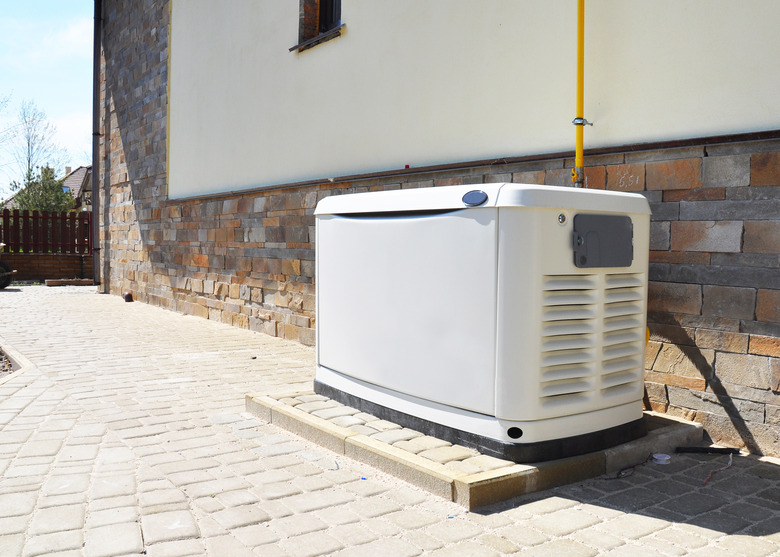What Will A 6,000-Watt Generator Power?
We may receive a commission on purchases made from links.
Your power goes out and you have a 6,000-watt generator for emergencies. Understanding what a 6,000-watt generator can power up may require some sacrifices. Much of this depends on what you need to survive in an emergency. Keeping your food cold, a freezer running, and even powering a well water pump may be possible. With some understanding of what 6,000 watts of power is, you'll have an idea of how much power it takes to run these major appliances.
Tip
A 6,000-watt generator will run a maximum of 50 amps of 120-volt power and have an average power surge of about 60 amps. This is enough to run most necessary major appliances.
Running Watts and Starting Watts
Running Watts and Starting Watts
Depending on which 6,000-watt generator you have or are in the market for is an important factor in deciding what it will run in your house. Some 6,000-watt generators will run 6,000 watts or close to it, but the starting watts can vary from one manufacturer to another. These starting watts can overcome the generator and will trip the breaker on the generator as appliances start up.
When a large home appliance, such as a refrigerator, starts up, it causes a surge of wattage. Much like hitting the gas a little harder to get a car moving from a stop, a refrigerator's compressor needs to hit the gas (starting watts) a little harder also. Once the refrigerator's compressor comes up to speed, it idles along at the running wattage. Anything with a motor, such as a furnace fan, operates the same way.
6,000-Watt Generator Voltage
6,000-Watt Generator Voltage
Many 6,000-watt generators can give either 120 volts or 240 volts AC. Having the 240 volts opens up more doors as far as what the generator will power. For instance, most well water pumps run on 240-volt AC, and if your 6,000-watt generator doesn't have this capability, you can end up without water in an emergency.
What Will the Generator Run?
What Will the Generator Run?
To figure out what a 6,000-watt generator will run in your home, you'll need to gather some information and do a little math. Go around your home and read the labels of the emergency items. Write down the voltage and amperage of each appliance, such as the refrigerator, freezer, water pump, and television if necessary to keep an eye on the emergency at hand.
After gathering the voltage and amperage of each appliance, multiply those figures together to get the wattage. For example, a typical full-size refrigerator uses a standard 120 volts and 5.8 amps. Multiplied together, you'll find that the refrigerator uses 700 watts. Don't forget about the starting watts, which can double or even triple that figure.
Using 240 Volts on a 6,000-Watt Generator
Using 240 Volts on a 6,000-Watt Generator
Let's try another example using a 240-volt water pump. The well pump specifications should be listed on the well water control box near the water piping coming into the house. A 1 HP well pump running on 240 volt AC will have a 25 amp circuit breaker but will only run 9 amps. So, 240 volts times 9 amps equals 2,160 watts. Again, don't forget about the starting watts.
Staggering the Appliances
Staggering the Appliances
Some electricians that install generators for a whole house may offer a load shedding system. This system simply staggers power to the preselected appliances. This helps control the starting watts after an outage so it doesn't overcome the generator.
If you have a portable 6,000-watt generator and plug it into the whole house, shut the breakers off and turn on one breaker at a time (label the important breakers beforehand). If carefully using extension cords, also use one appliance at a time utilizing this load shedding theory.
How Long Will a Tank of Gas Last?
How Long Will a Tank of Gas Last?
Once again, the answer to this question is dependent on the generator you have and the size of the tank. An open-frame, construction-style, 6,000-watt generator will run an average of 8 hours on one tank of gas. Other inverter-driven generators can last longer because they idle down when the demand is low instead of running at constant RPMs.
